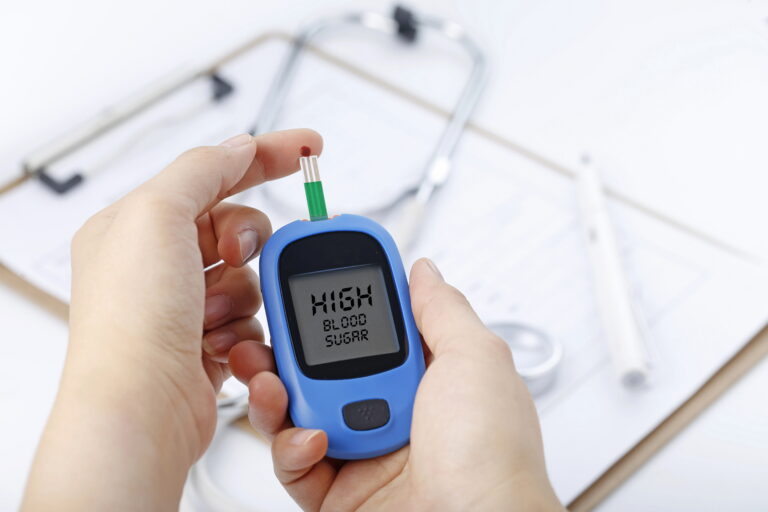Diabetes is a chronic condition that affects millions of people worldwide, and one of its most serious complications is diabetic retinopathy , a leading cause of blindness among adults. Understanding what diabetic retinopathy is, how it develops, and how to prevent it can help safeguard your vision. In this blog, we’ll explore these topics with insights from Dr. Shanthi Niketh, a renowned ophthalmologist at Shanthi Nethralaya Eye Hospital .

Diabetic retinopathy is a diabetes-related eye condition that damages the blood vessels in the retina, the light-sensitive tissue at the back of the eye. When these blood vessels are damaged, they can leak fluid or bleed, causing vision problems and potentially leading to blindness if left untreated.
Dr. Shanthi Niketh explains, “Diabetic retinopathy often develops silently, without noticeable symptoms in its early stages. Regular eye exams are crucial for early detection and treatment.”
High blood sugar levels over time can damage the tiny blood vessels in the retina. This leads to swelling, leakage, or abnormal growth of new blood vessels, all of which impair vision.
Diabetic retinopathy often progresses without symptoms in its early stages, but as it worsens, you may notice:
If you experience any of these symptoms, consult an eye specialist at Shanthi Nethralaya Eye Hospital immediately.
Diabetic retinopathy progresses through four stages:
Stage | Description |
Mild Nonproliferative Retinopathy | Small areas of balloon-like swelling (microaneurysms) occur in the retina’s blood vessels. |
Moderate Nonproliferative Retinopathy | Blood vessels become blocked, disrupting blood flow to the retina. |
Severe Nonproliferative Retinopathy | Many blood vessels are blocked, leading to reduced blood supply and signaling the retina to grow new vessels. |
Proliferative Diabetic Retinopathy | New, abnormal blood vessels grow on the retina and vitreous gel, increasing the risk of bleeding and scarring. |
Preventing diabetic retinopathy involves managing diabetes and adopting healthy lifestyle habits. Here are some effective strategies:
Maintain your blood sugar within the target range recommended by your doctor.
Keep your blood pressure and cholesterol levels under control to reduce stress on blood vessels.
Annual dilated eye exams at Shanthi Nethralaya Eye Hospital can detect early signs of retinopathy before symptoms appear.
Smoking worsens diabetes complications and increases the risk of retinopathy.
Eat a balanced diet rich in fruits, vegetables, whole grains, lean proteins, and healthy fats. Limit processed foods and sugary snacks.
Regular exercise improves blood circulation and helps manage blood sugar levels.
Follow your doctor’s advice regarding medications for diabetes, blood pressure, and cholesterol.
“Diabetic retinopathy is preventable and manageable with proactive care,” says Dr. Shanthi Niketh. “The key is early detection and consistent management of diabetes. I urge all my patients to prioritize their eye health by scheduling regular check-ups at Shanthi Nethralaya Eye Hospital .”
High Blood Sugar → Damaged Retinal Blood Vessels → Swelling/Leakage → Vision Loss
Early Detection + Proper Management → Prevents Progression → Protects Vision
This flow chart highlights the importance of early intervention and proper diabetes management in preventing diabetic retinopathy.
While there’s no cure, treatments like laser therapy, injections, and surgery can slow its progression and preserve vision.
Diabetics should have a comprehensive dilated eye exam at least once a year, or more frequently if advised by their eye doctor.
Yes, both type 1 and type 2 diabetes can lead to diabetic retinopathy.
No, with early detection and proper treatment, most people can prevent severe vision loss.
A healthy diet helps control blood sugar, blood pressure, and cholesterol, reducing the risk of retinal damage.
Early stages often have no symptoms, but later stages may include blurred vision, floaters, or dark spots.
Yes, hormonal changes during pregnancy can accelerate retinopathy, so close monitoring is essential.
Laser treatment is usually painless, though some patients may feel mild discomfort.
Once damage occurs, it cannot be reversed, but further damage can be prevented with proper care.
For advanced treatment and personalized care, visit Dr. Shanthi Niketh at Shanthi Nethralaya Eye Hospital .
Your eyes are your windows to the world—don’t neglect them. For personalized advice and comprehensive eye care, visit Shanthi Nethralaya and consult Dr. Shanthi Niketh. Book your appointment now to ensure lifelong healthy eyes!

WhatsApp us